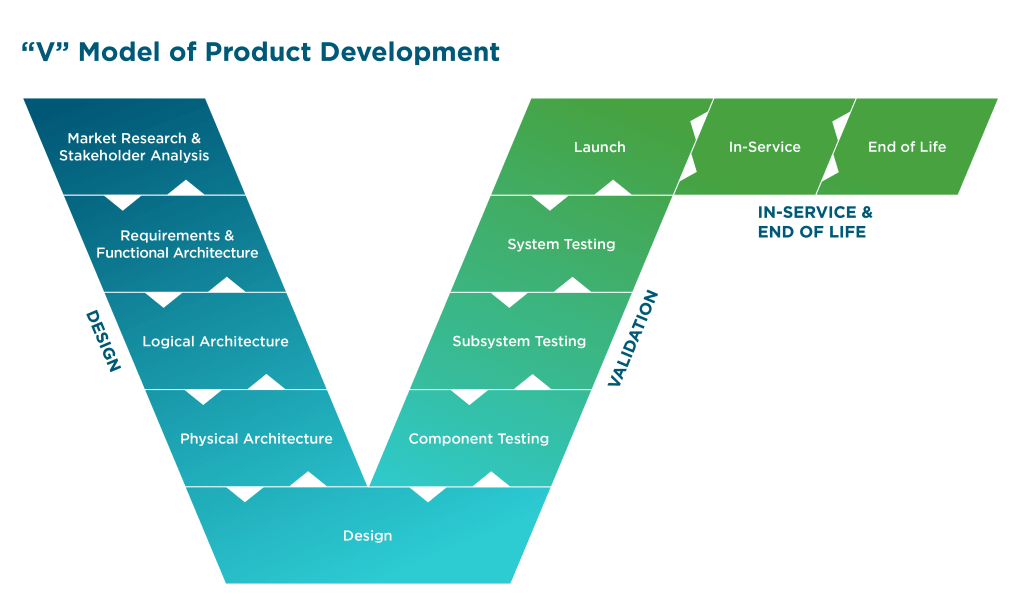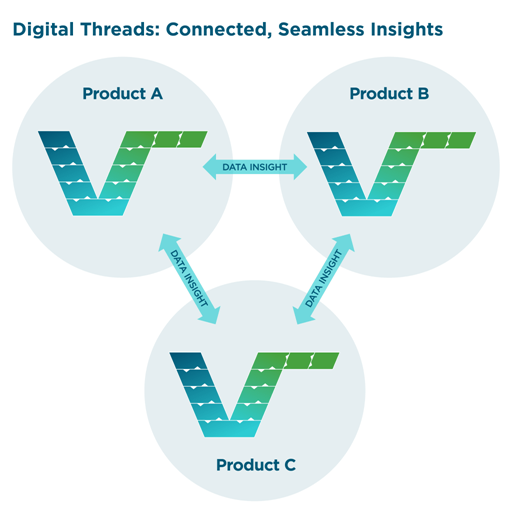How digital threads enable a new era of product development
How digital threads enable a new era of product development
Companies need to invest in tools, platforms, and environments that can enable digital threads, so they don’t fall behind competitors
BY altair
Product development, no matter the industry, is both an art and a science. Bringing a concept to life requires intensive research, ingenuity, risk-taking, iteration, testing, and a little magic. More than anything, it requires collaboration—between individuals, teams, departments, and leaders of different backgrounds, skill sets, and specialties. Even at its smoothest, product development is a dynamic, fast-paced, and often hectic process with a lot of moving parts. It’s a cycle that has worked for decades, but with flaws.
THE LIMITS OF TRADITIONAL PRODUCT DEVELOPMENT
Historically, companies developed products—and their electrical, mechanical, and control/software aspects as included in the traditional V-shaped product development cycle—sequentially, in silos. At times, this caused issues downstream. Designers and engineers situated later in the development cycle were often left in the dark as to why decisions were made, and if they wanted to find that information, they often had to spend more time researching than working. Making data useful was difficult and time-consuming, as it was often buried in dense documents and reports. This informal, inactive method of collaboration reinforced silos and fostered design inconsistencies.

Within the past few decades, these limitations have become glaring thanks to the digital era’s extraordinary technological leaps. Even in the last five years, the explosion of data analytics, machine learning, artificial intelligence (AI), and digital twins has revolutionized the product development process. Undoubtedly, the pace and precision needed to maintain a cutting-edge development cycle has never been higher.
The technology, at least at face value, isn’t the problem. After all, simulation tools are putting more power in users’ hands than ever, letting them design and test more iterations before settling on a physical prototype. Cloud computing has enabled teams to do more with less and democratized access to high-powered computing resources. What do these processes all have in common? Data—loads of data.
At every step of the product development life cycle, individuals and teams are generating more data than ever, a literal gold mine of insight and knowledge. Yet outdated processes and tools that foster knowledge gaps and silos are causing this data—this crucial spring of insight—to fall through the cracks.
This has ominous ramifications: A company that’s unable to leverage the full scope of knowledge and insight it creates is at a serious disadvantage against more agile competitors. Informal methods of collaboration, communication, and traceability lead to more failures, which lead to more design loops and longer time to market. Many organizations, even today, believe silos and knowledge gaps are inevitable. Not anymore.
DIGITAL THREADS: FILLING IN THE BLANKS
Enter the concept of a digital thread. Digital threads are a collection of methods, tools, and technologies that give organizations a holistic understanding of overall product performance, cost, and mass and, more importantly, an understanding of how and why products have evolved over time. Digital threads illuminate the gaps and silos that mar traditional product development, linking all users to a shared model-based systems engineering practice by integrating models, data, and insight in a collaborative environment—no matter what department they’re in or where they sit in the development cycle. This ecosystem also extends to external stakeholders such as suppliers and customers.
Rather than developing models, prototypes, and products sequentially—or using only computer-aided design (CAD) as the single source of truth—a true digital thread empowers organizations to break silos and enable concurrent development, a massive differentiator that transforms the way organizations do business.

More technically, digital threads are about providing organizations with a single source of truth. Model-based ecosystems allow people and teams to manage the evolution of entire systems through shared models, platforms, and data. Digital threads also enable teams to see how design changes impact key metrics in real time and what impact they’ll have downstream.
More and more enterprises are realizing the need to adopt digital threads because they don’t have a simulation-centric digital thread ecosystem that can trace products’ performance, cost, mass, and other attributes from concept to in-service use and beyond. What was once the domain of pure CAD is now much more expansive, encompassing the entire development process.
On a broad level, digital threads let engineers spend more time doing their work with detailed, informed historical insight, rather than needing to spend their time researching and combing through documents. Above all, digital threads are about one thing: efficiency.
REAL-TIME INSIGHT FROM START TO FINISH
With digital threads, data and insight becomes more usable, more traceable, and more transparent from concept to in service and beyond. Indeed, digital threads extend beyond product development to encompass in-service root cause analysis (RCA) and remaining useful life (RUL) estimates. This gives organizations an unparalleled ability to leverage digital threads’ two-way flow of insight: it allows them to more quickly solve problems in the field, while also informing them of future design enhancements that could avoid those problems in the first place. Rather than waiting to diagnose problems in the field after a product is in service, they can effortlessly bake the insight they gleaned from that field data into the next generation of their products.
Overall, digital threads connect individuals and teams within the product development process, and they also tie together products that are already in service with those that are still in their earliest concept stages. In essence, a product in the conceptual stage can learn from historical or field data from a similar product line before it’s even been designed or tested—that’s true innovation.
The pace of technological innovation and product development timelines will only continue to accelerate. Companies need to ensure they’re investing in tools, platforms, and environments that can enable digital threads, lest they risk falling behind their more connected, more informed competitors. Far from a pie-in-the-sky concept, digital threads are here now, impacting products and processes all around us. Welcome to the new era of product development and life cycle management.
To learn more about how Altair’s technology enables digital threads, visit https://altair.com/.
(7)



